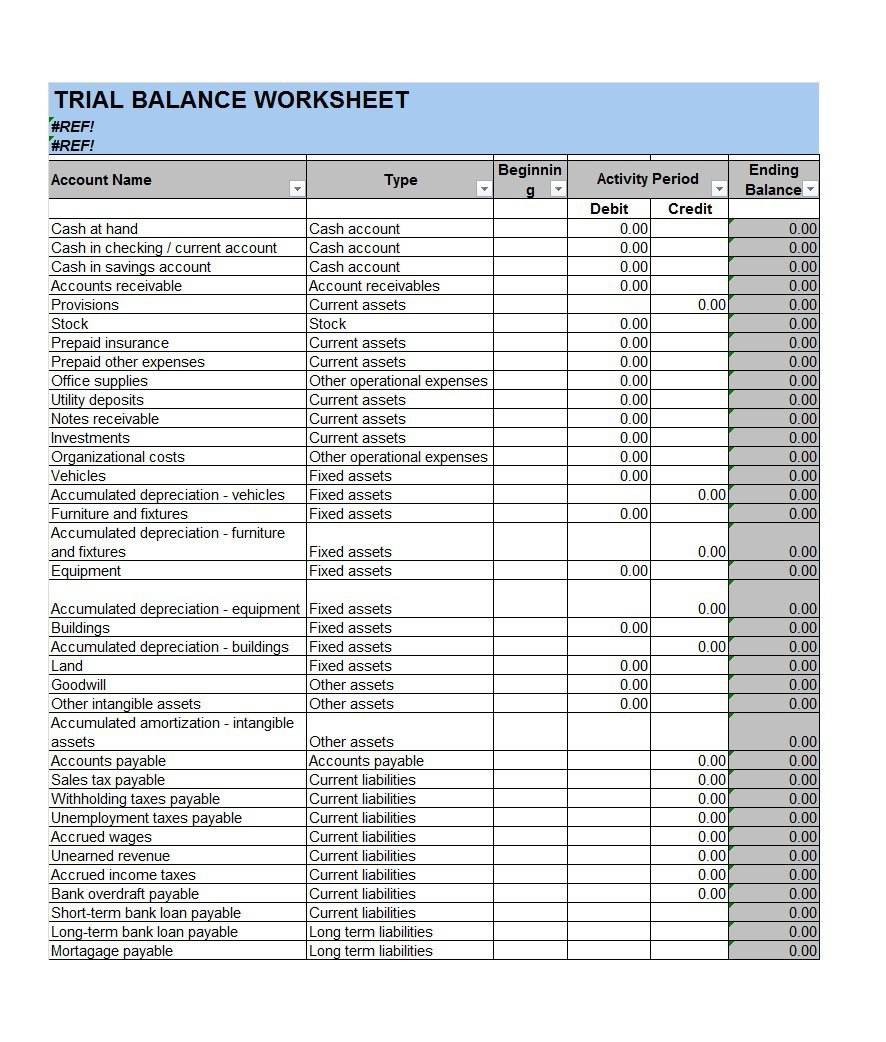
Employees usually prefer knowing their jobs are secure and that the company they are working for is in good health. When analyzed over time or comparatively against competing companies, managers can better understand ways to improve the financial health of a company. Each category consists of several smaller accounts that break down the specifics of a company’s finances. These accounts vary widely by industry, and the same terms can have different implications depending on the nature of the business. Companies might choose to use a form of balance sheet known as the common size, which shows percentages along with the numerical values. As noted above, you can find information about assets, liabilities, and shareholder equity on a company’s balance sheet.

Balance Sheet Equation
Leverage can also be seen as other people’s money you use to create more assets in your business. The difference between a company’s total assets and total liabilities results in shareholders’ equity (or “net assets”). Do you want to learn more about what’s behind the numbers on financial statements? Explore our finance and accounting courses to find out how you can develop an intuitive knowledge of financial principles and statements to unlock critical insights into performance and potential.
Balance Sheets Are Subject to Several Professional Judgment Areas That Could Impact the Report
Alongside her accounting practice, Sandra is a Money and Life Coach for women in business. Accounting systems or depreciation methods may allow managers to adjust numbers on the balance sheet. Some executives may fiddle with balance sheets to make businesses look more profitable than they actually are. Thus, anyone reading a balance sheet should examine the footnotes in detail to make sure there aren’t any red flags.
Accounting Ratios
The current ratio measures the liquidity of your company—how much of it can be converted to cash, and used to pay down liabilities. The higher the ratio, the better your financial health in terms of liquidity. Because it summarizes a business’s finances, the balance sheet is also sometimes called the statement of financial position. Companies usually prepare one at the end of a reporting period, such as a month, quarter, or year. What limitations should be considered in comparative balance sheet analysis?
Comparative balance sheets play a vital role in preparing strategic plans. By studying financial trends over time, companies can determine growth goals that are achievable without overextending themselves. For example, comparative balance sheets can be used to determine whether a company has sufficient earnings retained to fund an expansion. Changes in accounting irs guidance clarifies business policies or standards over time can affect how financial data is reported on the balance sheet. For instance, when a company switches from one method of calculating depreciation to another, it affects the reported values for fixed assets. This in turn makes it difficult to compare the balance sheets over the same period in a standardized fashion.
If the company wanted to, it could pay out all of that money to its shareholders through dividends. Shareholders’ equity reflects how much a company has left after paying its liabilities. The revenues of the company in excess of its expenses will go into the shareholder equity account.
Although it takes time and effort to create an accurate balance sheet from scratch, it is a vital report you as a business owner should have. While current assets can be converted into cash within a year, liquidating non-current assets, such as fixed assets (PP&E), can be a time-consuming process. If the fundamental accounting equation is not true in a financial model—i.e. The balance sheet does not “balance”—the financial model contains an error in all likelihood.
Often, the reporting date will be the final day of the reporting period. Companies that report annually, like Tesla, often use December 31st as their reporting date, though they can choose any date. Below is an example of a balance sheet of Tesla for 2021 taken from the U.S.
These revenues will be balanced on the assets side, appearing as cash, investments, inventory, or other assets. This category is usually called “owner’s equity” for sole proprietorships and “stockholders’ equity” or “shareholders’ equity” for corporations. It shows what belongs to the business owners and the book value of their investments (like common stock, preferred stock, or bonds). The asset section is organized from current to non-current and broken down into two or three subcategories. This structure helps investors and creditors see what assets the company is investing in, being sold, and remain unchanged.
- This statement of financial position indicates the intricate details of assets, liabilities, and equity, empowering stakeholders to gauge the company’s financial standing and make well-informed choices.
- Total liabilities and equity are also added up at the bottom of the sheet—hence the term ‘bottom line’ for this number.
- On the other side, you’ll put the company’s liabilities and shareholder equity.
- If you are preparing a balance sheet for one of your accounting homework problems and it doesn’t balance, something was input incorrectly.
- It shows the company’s assets along with how they are financed, which may be by debt, equity, or a combination of both.
Assets can be classified based on convertibility, physical existence, and usage. Current and non-current assets should both be subtotaled, and then totaled together. This may refer to payroll expenses, rent and utility payments, debt payments, money owed to suppliers, taxes, or bonds payable.
The balance sheet is an important financial statement as it will show a summary of a company’s assets, liabilities, and shareholders’ equity at a specific point in time. Finally, it’s worth noting that the balance sheet typically represents a company’s financial position at the end of a calendar year. However, it can also be prepared at other points in time to provide a more up-to-date snapshot of a company’s financial health. Liabilities are obligations that a company owes to others and that must be settled in the future.
